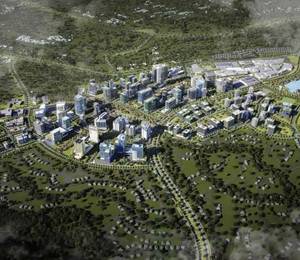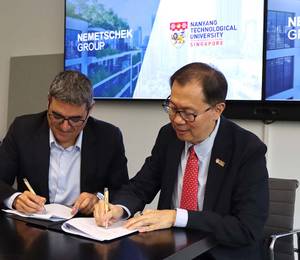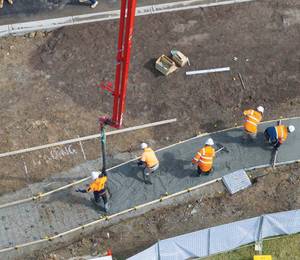Inspired by a traditional Chinese wood block puzzle, the new Taipei Performing Arts Centre (TPAC) has recently opened to the public. This iconic landmark was built to meet the demands of the city’s contemporary art scene and advance Taipei as a world-class art capital.
Designed by OMA (Office for Metropolitan Architecture), for Taipei City Government’s Department of Cultural Affairs, the new 58,000 sq m complex features three theatres plugged into a central cube-shaped building that contains backstage areas, foyers, front-of-house and support facilities.
The three theatres – a 1,500-seat grand theatre, an 800-seat Blue Box multiform theatre, and an 800-seat Globe Playhouse – can be used independently or combined when necessary.
Arup was commissioned to provide structural engineering, mechanical engineering, sustainable building design, computational fluid dynamics (CFD) and fire engineering services for the project.
“To give freedom for architectural planning of the theatres and other large spaces, we turned the faces of the cube into a stiff braced steel box carrying the building’s lateral loads and much of the gravity force,” revealed Arup. "The cube works in conjunction with columns beneath the auditoria to support and stabilise the three projecting volumes.”
Resilient structural system
Due to Taipei’s high seismicity, Arup said the whole superstructure is base-isolated to attenuate the transmission of ground motions into the building, reducing the forces experienced by the structure and finishes by over 60% and enabling structural element sizes to be decreased and detailing simplified. With the first use of friction pendulum isolators in Taiwan, the structural system realised the most economic and resilient building possible for the location.
The three theatres are supported on their projecting columns via networks of trusses, added Arup. In the ellipsoidal Globe Playhouse, the 26-m cantilevering volume is framed by a three-dimensional space truss occupying the space between the auditorium and outer shell, supported on the cube perimeter structure as well as the flying V-column. Balconies, circulation routes and servicing are threaded in between the truss elements.
Fire safety design
Arup pointed out that the architectural design of the transformable theatre space posed major challenges to fire engineering and ventilation. The myriad variations in stage and seating layouts of the ‘super theatre’ configuration, in which the two main theatres are connected to create a giant auditorium with a 60-m-long central stage, made it difficult to be fully compliant with the local prescriptive code in terms of fire compartmentation.
“Through a dynamic fire simulation analysis, we demonstrated that regardless of the theatre configuration, the building could be evacuated safely in the event of a fire without conventional fire separation methods such as enclosing the central stage area with fire shutters,” explained Arup.
“In addition, we rationalised the building escape routes to optimise the theatre seating arrangements, reduce the number and width of staircases, and extend the safe travel distance. This solution created a more open and integrated space in the building and increased the number of seats, hence providing more revenue for the client.”
With such an approach, Arup successfully convinced the authorities that its comprehensive fire strategy meets the best safety standards despite the deviations from the local code. This in turn has set a benchmark for other complex buildings in Taiwan.
Furthermore, the compact design of TPAC brings about advantages in sustainable operation, including energy efficiency, self-shading and passive design.
Arup highlighted, “To ensure our ventilation strategy would achieve optimal occupant comfort, we carried out extensive computational fluid dynamics analyses to assess the air flow through the auditorium and stage areas in their various configurations, taking into full consideration the needs of audience and performers as well as location and speed of air supplies.
“This demonstrated that satisfactory comfort could be achieved in the combined super theatre arrangement, avoiding the need to install additional ventilation equipment.”
Image credits:
Image 1: Arup
Image 2: Dirk Heindoerfer
Image 3 & 4: Shephotoerd Co. Photography for OMA
Image 5: Arup
Note: This article (with more images) has been published in the Jul/Aug 2022 issue of Southeast Asia Construction. Click here to read online or here to download the PDF file (pages 58-63).
















